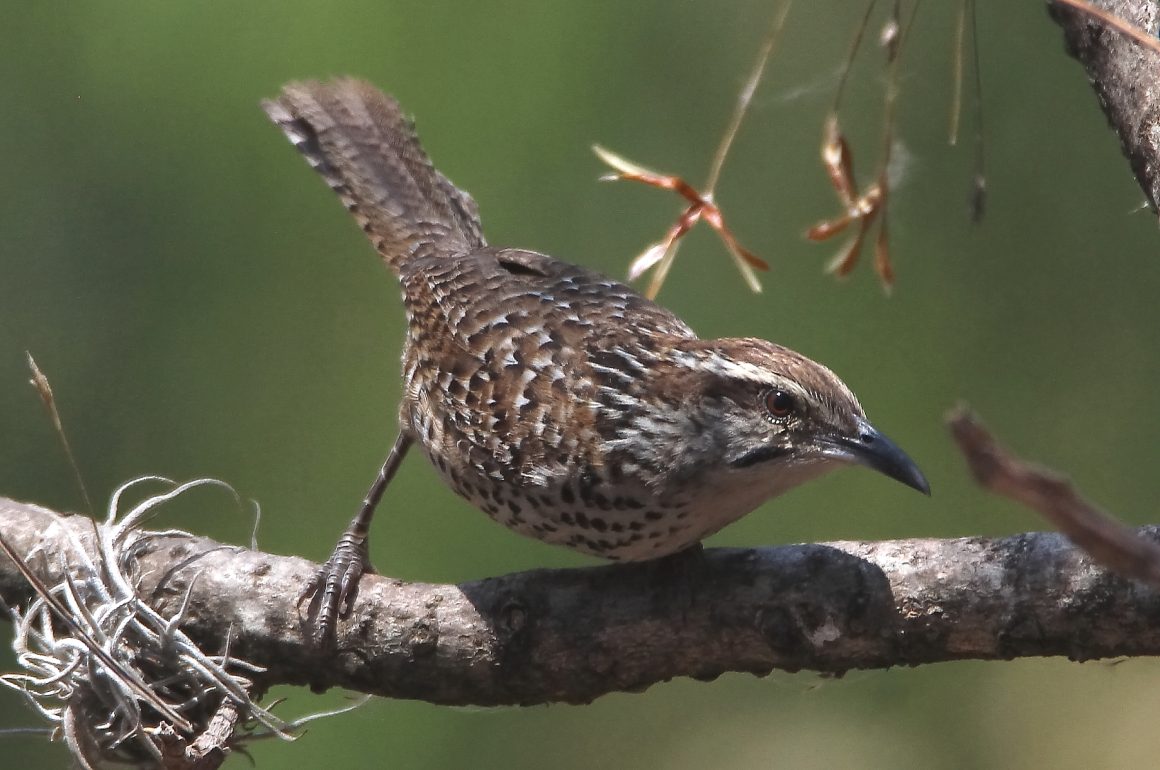
Most weeks, I can blog about going somewhere a bit more exotic, and seeing something a bit more unusual for me. But this week, I had no car to drive, so I had to go on foot to the nature reserve on the far side of our neighborhood.
This place, called Los Filtros Viejos (the Old Filters) because it used to be Morelia’s main water source, is actually a great place for birding. The only reason I don’t go there often, is that it is only lightly forested, is often hot (especially in April), and I inevitably end up walking a hard 10 km/6 miles on its very uneven, rocky pathways in order to see its variety of habitats. I am always down for the day when I get home. And there is nothing I can see there that I can’t also see, alongside rarer birds, elsewhere.
Still, I did manage to see a decent 65 species in 6 hours, and many of them stayed quite close to me, allowing for some nice photos. Let’s see if you agree:
I liked some of the photos as much for their backgrounds as for the bird itself, such as this Lincoln Sparrow foraging among duckweed, algae, Ficus fruits, and Jacaranda flowers.
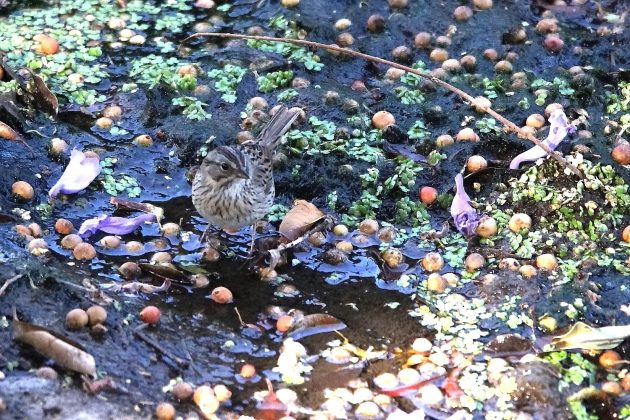
This female Varied Bunting shows just a hint of the male’s beautiful colors. You will see another female below.
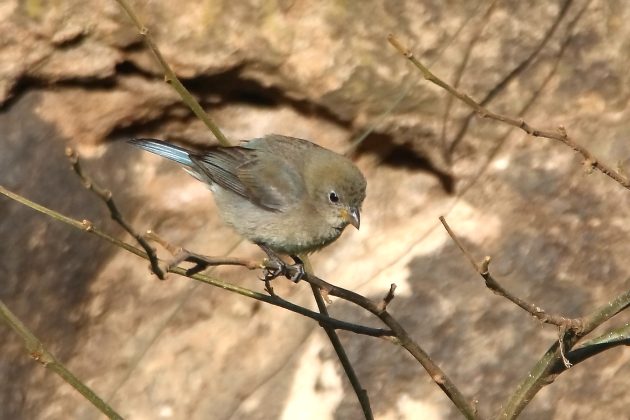
Warbling Vireos are very common in Morelia in the winter, including at my birdbath. Most other North American vireos have an almost shrike-like bill, but this one is more warbler-shaped.
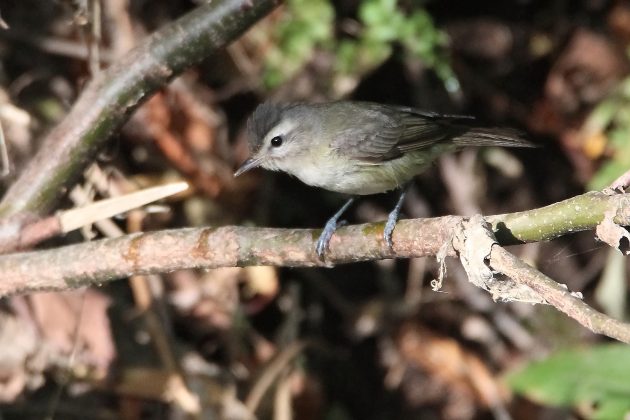
Since I don’t have a photo here of the male Black-headed Grosbeak, you’ll have to take my word for it that this female is just as handsome as the male, which is not the case with many other bird species:
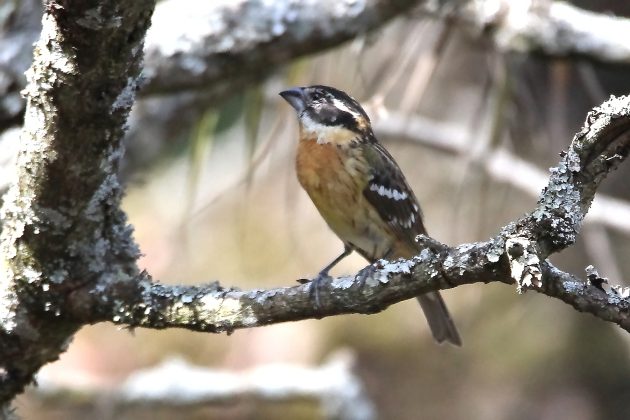
The Rusty Sparrow is found only from central Mexico south to Central America. But you can often see it at Los Filtros Viejos. It looks frustratingly similar to the Rufous-crowned Sparrow of the western United States and Mexico, but is much larger and has a heavier bill.
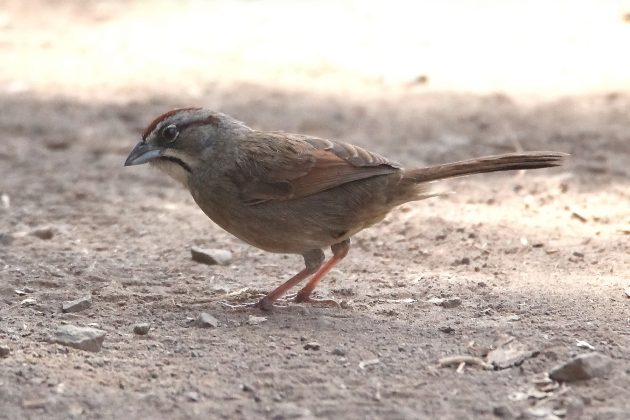
Black-and-white Warblers are usually dapper little birds, with their head-to-tail zebra stripes. But this one had just bathed, and had not yet combed its hair. Or perhaps it was going through that awkward stage.
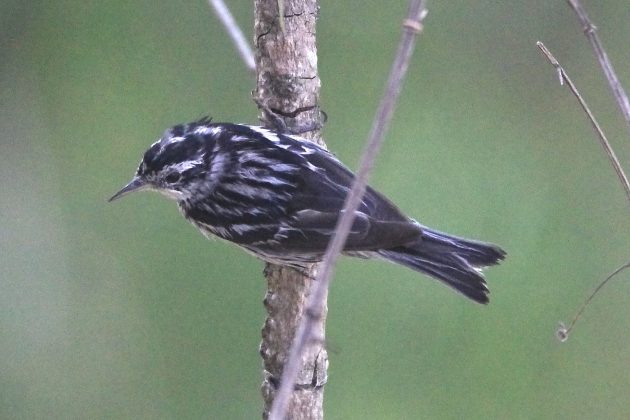
This Plumbeous Vireo, however, could not have looked more put together. Note that shrike-like bill.
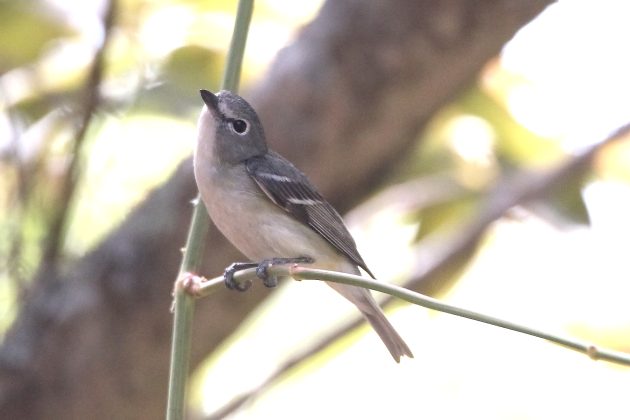
The lovely Rufous-capped Warbler is something of a flagship species for this site. And no, I did not flip this image on its side; that’s a truly vertical rock face.

In this photo, the star attraction was the lovely new red foliage of a Cedrela tree. But there’s a yellow Wilson’s Warbler in the background, as well. (Locals call this tree Cedro Rojo, Red Cedar. But it is obviously not a true coniferous cedar.)
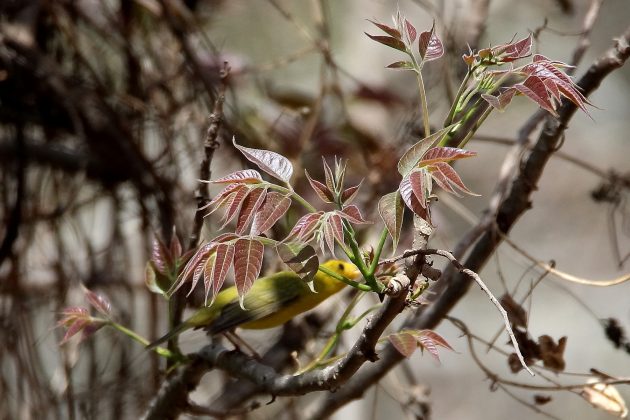
Most of our winter New World sparrows seem to have already headed north. But our resident Chipping Sparrows never leave.
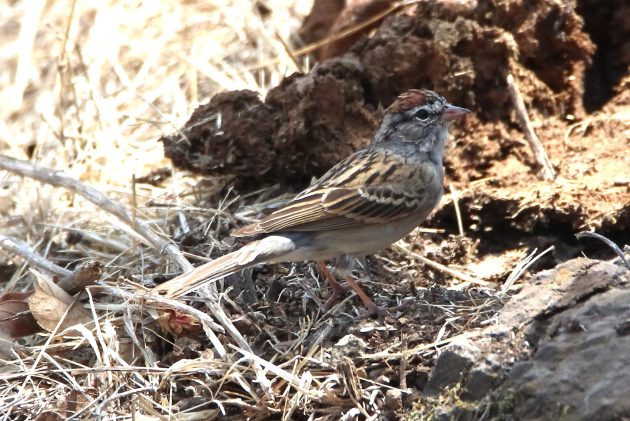
No other local bird can match the colors of our male Elegant Euphonias — although the females come close. The good news is that these photos do show those colors faithfully. And they show their favorite habitat: in the center of mistletoe thickets, where they eat the tiny fruits. Unfortunately, he never moved out from the center of that thicket.
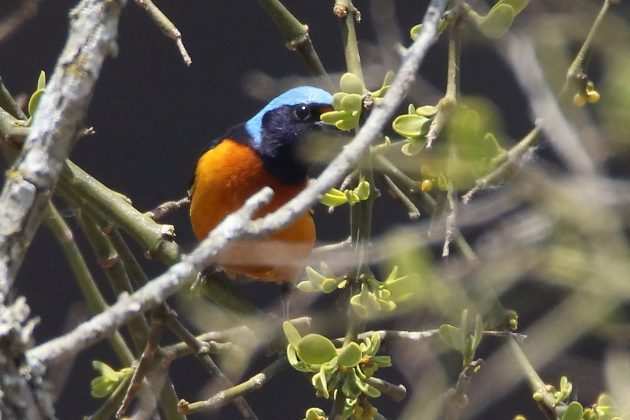
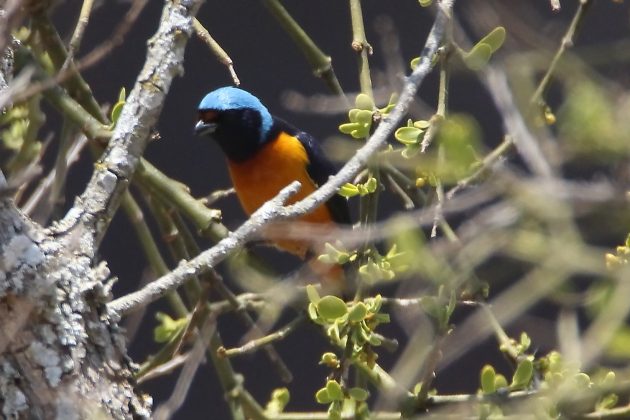
Since I rarely get to see migratory male Indigo Buntings in their summer finery, I’ll include this very fuzzy photo, taken from a considerable distance:
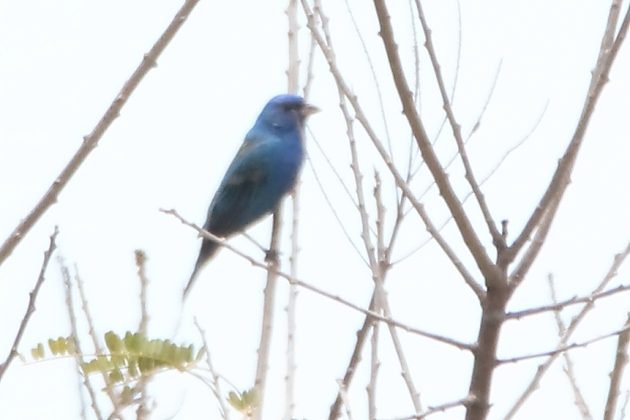
So then I started taking photos of that other female Varied Bunting, feeding on grass seeds. Suddenly I saw a ground squirrel creeping up on the Bunting. When I saw this photo, I couldn’t help but think of the two note theme from Jaws. BUM-bum, BUM-bum!
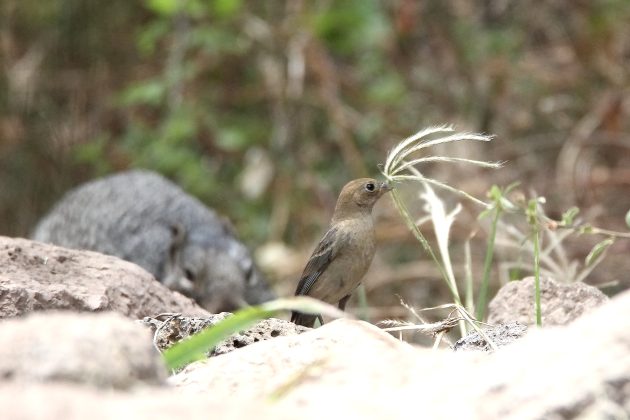
And then, the giant beast lunged! Fortunately, the little Bunting managed to escape. Leaving the squirrel to feed on the very same grass stalk.
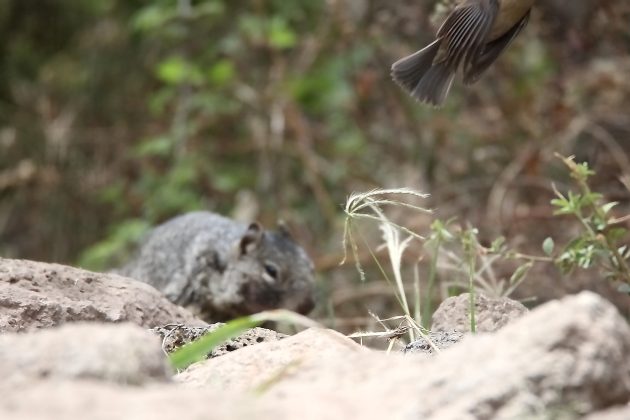
And towards the end of my long walk, since I am showing these photos in chronological order, I had a close encounter with a fully endemic bird. The Spotted Wren can only be found in the mountains of central Mexico, and up along the country’s Sierra Madre Occidental.
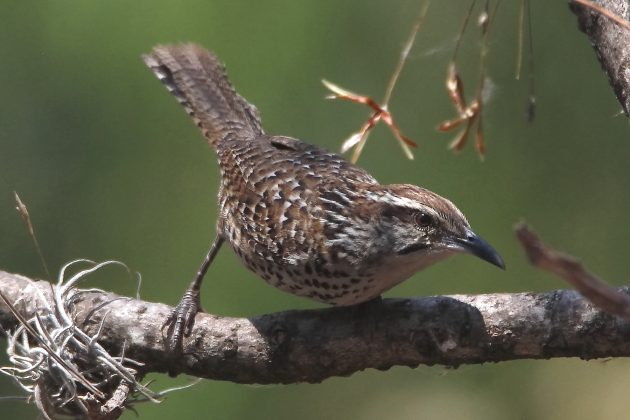
I love the closeup this bird gifted me. But there also is something special about nature itself perfectly framing a shot:
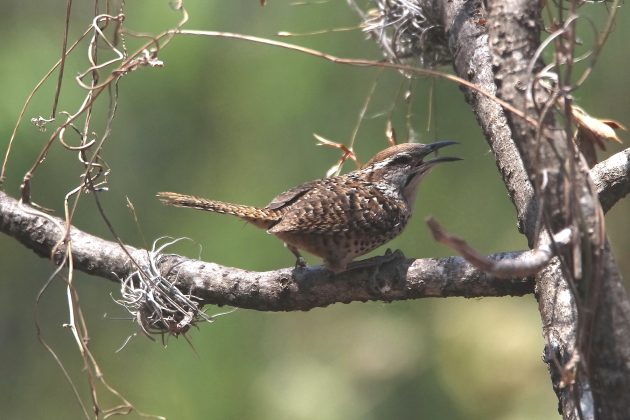
As so often happens, I also have a pair of non-bird photos to share. The bromeliad’s flower spike was about one meter/three feet long. And this turtle must be someone’s escaped pet, since Painted Turtles should not be found in the wild much beyond the southern U.S. border. It clearly is doing well in its new home, having grown to about a foot long. But I do wonder how well it is handling this year’s greatly reduced water supply here.
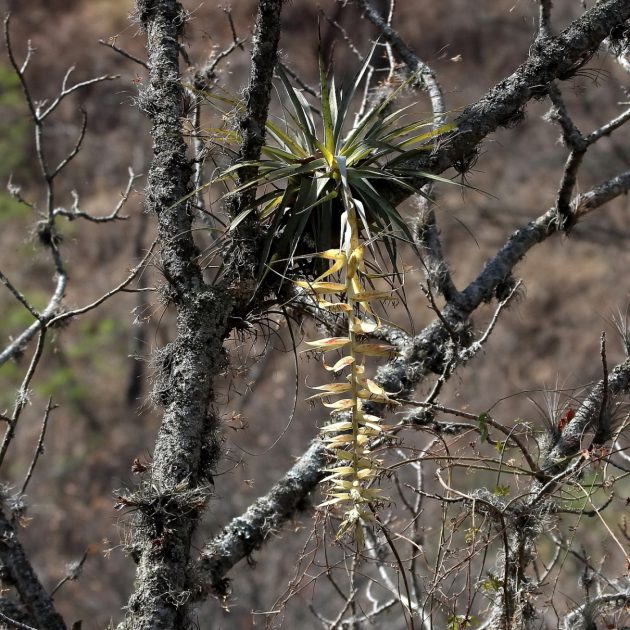
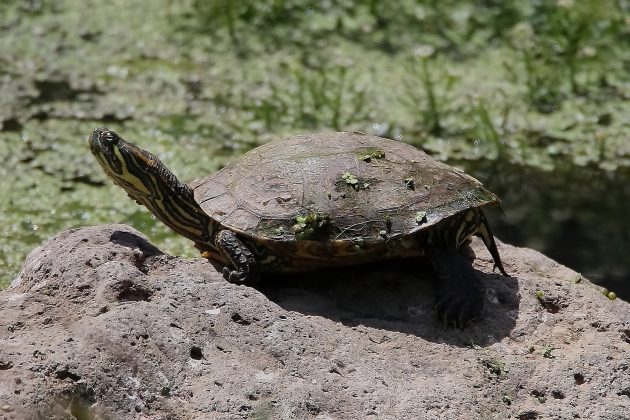












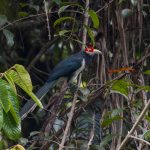
Leave a Comment